Relying on the pervasive smartphones, microlearning is playing an increasingly vital role in the corporate learning ecosystem. Corporate microlearning has made a great leap forward in China since 2015. As an emergent learning strategy for efficient skill enhancement, knowledge harvesting, and sharing, microlearning fits particularly well with front-line staff training in today’s fast-changing business world. Microlearning’s potential to deliver instant performance impact and efficiency optimization across industries is just starting to evolve and will quickly accelerate in the next three to five years. The following results from a 2016 national survey capture today’s microlearning practices in Chinese companies and make suggestions for how business firms should move forward.
Background
Companies across the nation are steadily adopting microlearning, making it an increasingly important tool for driving employee learning. Our annual study examined microlearning data collected between November and December 2016 from 296 firms. The survey covered 19 industries, among which manufacturing (19.5%), healthcare and social security (18.5%), finance (11.8%), and education (10.4%) are more involved. Large companies with over 1,000 employees are the majority of our sample (61.3%). Firms with 200 – 999 employees and those with fewer than 200 employees had almost equal shares, 19.2% and 19.5% respectively. A majority (60.9%) of respondents were from training or human resource departments.
Awareness of microlearning
Almost half (46.5%) of the respondents are very familiar with microlearning. Slightly more (48.1%) have heard of microlearning but have no experience (Figure 1).
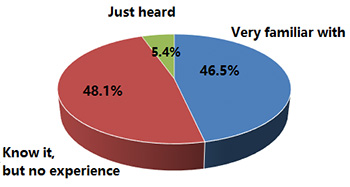
Figure 1: Nearly 95% of respondents knew about microlearning
However, the survey data reveal wide variations in practitioners’ awareness of “what microlearning is.” Based on word-frequency statistics, we find that respondents mainly interpret the concept from the perspectives of “micro” and “learning,” such as short (“no longer than 10 minutes”), focused content (“single knowledge point/specific skill or problem”), “easy-to-understand and practical,” “courses or learning resources,” etc. (Figure 2).
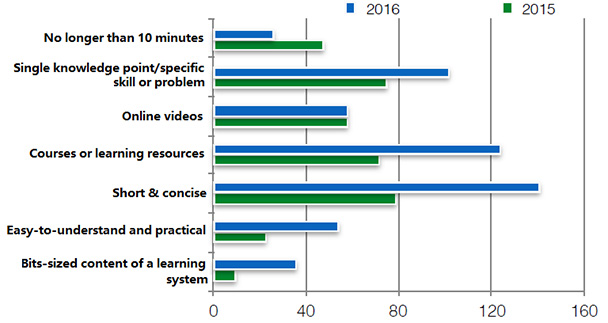
Figure 2: Respondents’ awareness of “what microlearning is” (Note: In these bar charts, the X axis shows the response count)
The top five choices believed to describe microlearning (Figure 3), primarily online, are:
- Videos of a single knowledge point (82.2%)
- Demo videos of a particular operation (73.4%)
- Videos under 10 minutes (73.4%)
- Bite-sized learning contents or resources (72.1%)
- Short training courses (70.0%)
There are also certain respondents considering offline alternatives, such as “short training courses” (70%), “flipped classroom or blended learning projects” (26.6%), and “offline experience sharing” (21.5%). More than half agreed that mobile learning platforms are a manifestation of microlearning.
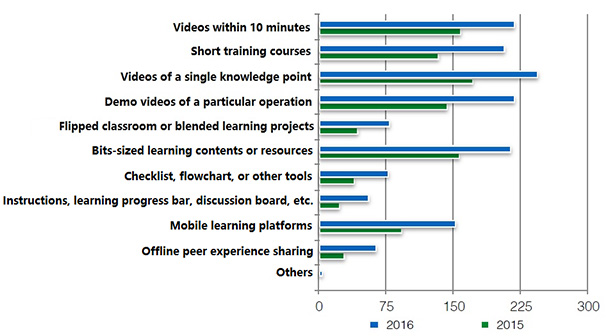
Figure 3: Microlearning manifestations
Current practice
Companies’ speed of adoption of microlearning is accelerating. Close to 70% of firms have engaged in microlearning, although at different stages (Figure 4): “have explored microlearning in a systematic way” (17.5%), “have developed some microlearning, but not systematized” (26.6%), and “just started developing microlearning” (23.9%). About one-fifth (19.2%) of the companies already had a plan and were prepared to develop microlearning. Only 12.8% had no plan.
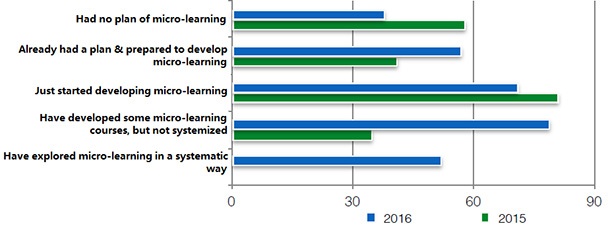
Figure 4: Current microlearning practice
Internal trainers and subject matter experts (SMEs) still represented the main force of corporate microlearning development at 53.2% (Figure 5). Meanwhile, user-generated content (UGC) emerged rapidly (47.8%) and business units, not training departments, gradually dominated (34.3%). Meanwhile, corporate university or training departments are still playing a relatively important role in microlearning (29.3%). Outsourcing or hiring external consulting firms was the least popular option (12.1%).
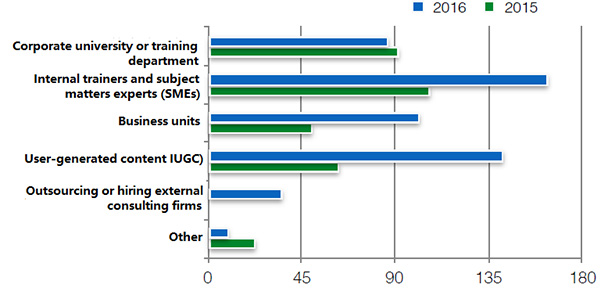
Figure 5: Who are the developers?
An outstanding trend we find is the rise of UGC as the second leading source of corporate microlearning. Microlearning content is short, highly focused on a specific work task or scenario, but in huge demand—thus it is not feasible to rely on a limited number of professionals (such as trainers or SMEs) to develop. Corporate university and training departments, as they are not familiar with the real story of the operational front lines, are not efficient enough to lead the development of microlearning. Therefore, the optimal framework of microlearning development would be led by business units, with front-line employees’ participation, and boosted by UGC.
In terms of presentation format (Figure 6), the dominant options were WeChat sharing (68.4%), eLearning (53.2%), and mobile learning (48.5%). This result showed that corporate microlearning mainly leveraged the power of social media and mobile Internet technologies, which contributed to the rapid spread and wide application in China.
Notably, “short courses delivered by trainers” and “knowledge sharing” appeared to be two other important manifestations (43.8% and 42.4% respectively). This indicated that some companies have been utilizing flipped classroom or other means to explore microlearning in the workplace. Job aid tools (22.6%) and experts’ experience sharing (21.5%) were less preferred means.
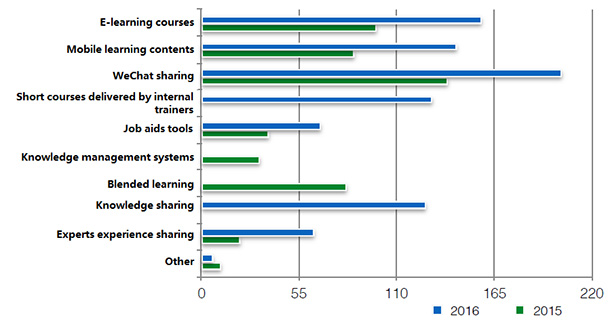
Figure 6: Microlearning manifestations
Feedback from this national survey described four major use cases of corporate microlearning (Figure 7):
- New employees’ training (63.3%)
- Front-line employees’ operational skills training (60.9%)
- Peer experience sharing (55.6%)
- Up-to-date product knowledge updates and business, or hot topics (53.9%)
Microlearning could be applied independently or in conjunction with other training sessions and/or informal learning approaches. Currently, there is still great room for growth and further development in areas of “blended learning” (40.1%), “communicating with and serving clients or external partners” (25.9%), “job aids, tools, and performance support” (23.9%), and “leadership development project” (16.8%).
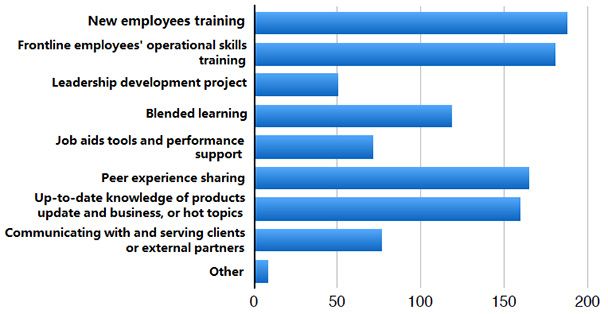
Figure 7: Use cases of corporate microlearning
Of the participating companies, 57.6% had designed and developed microlearning (Figure 8). Among those, 11.1% had rich experience, while 46.5% were just at their initial trials. The other 42.4% of respondents hadn’t touched microlearning development.
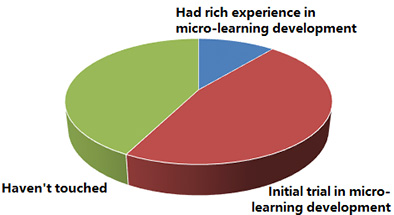
Figure 8: Well over half of the companies had development experience
The top three reasons preventing firms from attempting microlearning (Figure 9) are:
- It’s not a “must” and not urgent (38.4%)
- Too busy with job duties, no time to develop microlearning content (36.7%)
- Willing to do, but don’t know how to do it when lacking guidance (30.3%)
Although the technology barriers to developing microlearning have been greatly reduced compared to traditional training courses, developers still need to learn some new skills and spend extra time. It is a challenging task that requires technical skills (23.9% of respondents indicated “almost finished, but too ugly to present,” and 14.8% admitted that they “gave up because of too many difficulties along the development process”). We believe insufficient support and incentive from top management are the key factors of lagged implementation. Only 5.4% didn’t plan to use microlearning due to their unfavorable view of it.
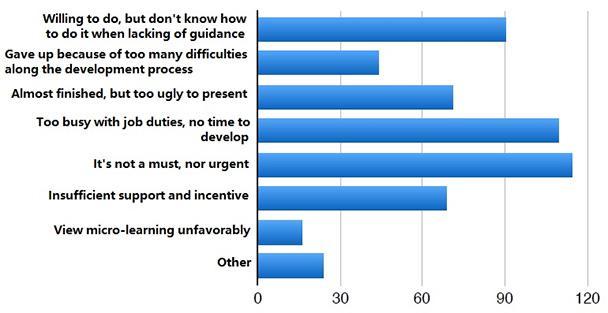
Figure 9: Why respondents didn’t engage in microlearning
Most reported difficulties were at the development and design stages (Figure 10).
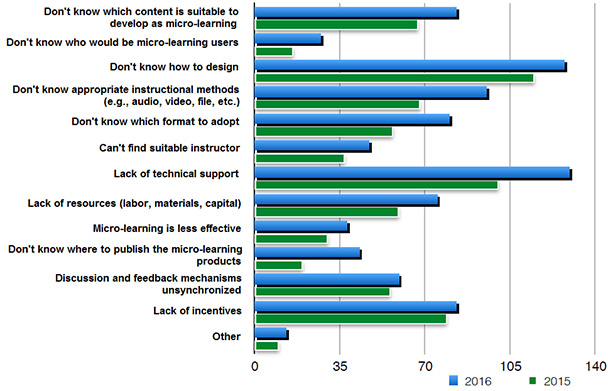
Figure 10: Major obstacles in implementing microlearning
The five key success factors of microlearning (Figure 11) were to:
- Understand the learning needs of target employees (75.8%)
- Extract the most valuable content in concentrated format (71.4%)
- Know which kinds of content are appropriate for microlearning (61.6%)
- Make learning content interesting, innovative, and enjoyable (56.6%)
- Choose suitable media to present the learning content (54.2%)
Topic selection, content curation, instructional design, and implementation are four critical aspects of microlearning success. In addition, “personalized learning platform” (38.4%) and “systematic learning framework” (38.0%) are very important. Different from the traditional face-to-face training, respondents believed that an instructor’s capability was the least important factor in microlearning (only 21.9%).
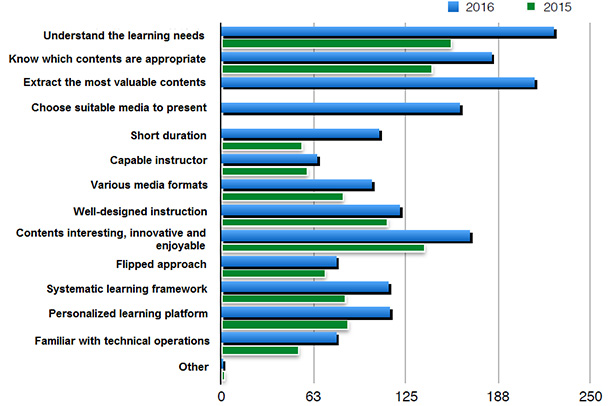
Figure 11: Key success factors of microlearning
Values and prospect of microlearning
The most attractive benefits of microlearning (Figure 12) were that it is:
- Rapid to spread (80.5%)
- Short and concise (72.4%)
- Simple and focused content (65.0%)
- Convenient for mobile learning (64.0%)
- Flexible (58.9%)
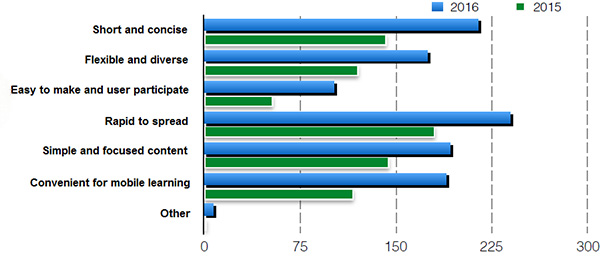
Figure 12: Benefits of microlearning
Based on semantic analysis of the feedback from an open-ended question, we summarized the following recommendations, focused on seven aspects:
- Companies should accelerate the promotion and awareness program in order to facilitate whole participation from employees
- Microlearning is not the silver bullet; thus right positioning can maximize the benefits of microlearning and foster its effective implementation
- Establishing the management system of microlearning, careful planning, developing, and evaluating microlearning are on the agenda
- Micro but not fragmentary; microlearning needs to be systematically integrated in order to fully unleash its value
- It’s a must to provide timely and strong support or hands-on help for microlearning design and development, including the necessary software tools
- Only when aligned with the practical needs of business units can microlearning enhance employees’ performance and gain wider support throughout the firm
- Companies should cultivate a favorable climate for microlearning by establishing corresponding assessment and incentive schemes

